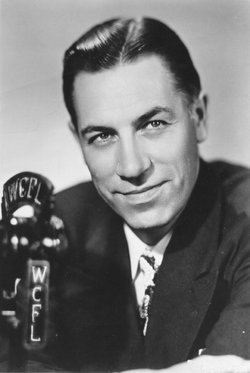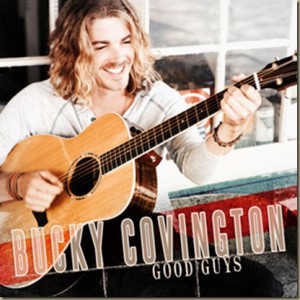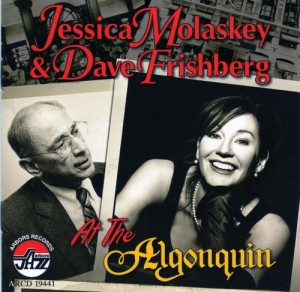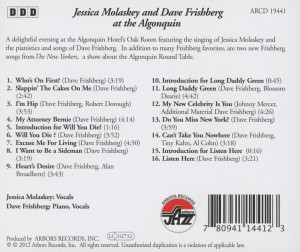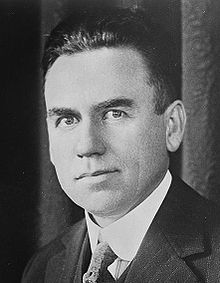News
 Music Charts Magazine Live Celebrity Interview with “Sleepy Man Banjo Boys”
Music Charts Magazine Live Celebrity Interview with “Sleepy Man Banjo Boys”
( As seen on David Letterman Show, The Today Show, & The Mike Huckabee Show )
Celebrity Interview with “Sleepy Man Banjo Boys” by Music Charts Magazine’s Big Al Weekley. The interview and performance is LIVE!
– 13th Annual Country Bluegrass Show in North Plattes, NE – April 25-27, 2013
Please listen and watch the video below.
If you are a fan of “Sleepy Man Banjo Boys” this video is a must hear & see!
Forty-five minutes from New York City in the western hills of New Jersey live the Sleepy Man Banjo Boys. With a combined age younger than music’s Hip-Hop era, eleven-year-old Jonny Mizzone on banjo, along with his brothers Robbie (14) on fiddle, and Tommy (15) on guitar are determined to bring their up-tempo acoustic string music to the next generation. Inspired by the 1950’s music of Flatt & Scruggs & The Stanley Brothers, the Sleepy Man Banjo Boys are passionate about sharing their God-given musical gifts and invite you to watch them grow. Released in October, their second album “The Farthest Horizon”, charted at #4 on Billboard’s Bluegrass Album Chart.
Author Name = Paul de Barros
Genre = Jazz
Title = Shall We Play That One Together? The Life and Art of Jazz Piano Legend Marian McPartland
Publisher = St. Martin’s Press (2012)
One of the most famous jazz musicians, Marian McPartland is known less for her playing than for hosting the weekly NPR program Piano Jazz for more than three decades, beginning in 1978. Initially, each program featured McPartland and another pianist: the two performed selections together, but also solo. In time, the concept expanded to include guests other than pianists. The program was successful for several reasons, including McPartland’s engaging personality, articulateness, and British accent; the host and guests’ intelligent discussions; the quality of the music; and the hour-long format, which permitted the participants time to talk and play without rushing. Some of the shows were released on CD, and the show continues being broadcast in re-runs. For the title of his biography of McPartland, Paul de Barros borrowed a question the pianist often asked on her program.
Yet McPartland was a substantial pianist. (Though she is living, I use the past tense because she no longer plays.) Classically trained, she became enamored of and proficient in jazz, ultimately comfortable performing in traditional, modern, and even free modes. To me, her most rewarding decade was the 1950s, when she led a group with bassist Bill Crow and drummer Joe Morello, had a multi-year engagement at the Hickory House in New York, and recorded three appealing albums for Capitol in successive years, the first in 1954: At the Hickory House, After Dark, and The Marian McPartland Trio. (I am unfamiliar with her fourth Capitol album, With You in Mind [1957], which de Barros deems “bland” [178]). That decade, she matured as a musician by becoming harmonically sophisticated and apparently gaining confidence in her artistry, even though she occasionally struggled with tempo. In time, she became so sure of her abilities that she played comfortably with the likes of Cecil Taylor, perhaps the most assertive free improviser.
De Barros’s presentation of McPartland’s life and career is comprehensive, balanced, and well written. He details McPartland’s early years: from birth as Margaret Turner in England (1918), through her sometimes difficult family life, through lessons in classical music at the Guildhall School in London (1935-1938), through studying and then touring with Billy Mayerl (1938), through the most important event in her life, personally and professionally: marrying the American trumpeter Jimmy McPartland in 1946. The author credits him with introducing his wife to the American jazz scene, of which he was a part, and illustrates the opposite trajectories of the spouses’ careers: his waned as hers waxed. De Barros treats Jimmy especially deftly. When discussing the trumpeter’s alcoholism and its effect on the McPartlands’ marriage, he neither dwells on it nor passes judgment. A chronicler, he does not moralize, as may further be observed in his treatment of the spouses’ infidelities. During the marriage, Jimmy fathered a child with another woman; Marian had a long affair with Joe Morello. As neither McPartland was terribly upset about the other’s unfaithfulness, there is nothing salacious in the presentation of these adulteries. The couple divorced in 1967, but remarried in early 1991, fewer than three weeks before Jimmy’s death.
In a biography, the details of the subject’s life matter. Yet Marian McPartland’s life is significant not because of her upbringing and various relationships but because of her contributions to music. These include her piano playing, which was admired by such luminaries as Duke Ellington, who listened to her at the Hickory House, and the composer Alec Wilder. Largely because of Wilder and radio producer Dick Phipps, she was asked to host Piano Jazz, though this was not her first broadcasting effort: For two years in the 1960s she hosted A Delicate Balance, a weekly two-hour jazz show on WBAI in New York. She composed music (“Afterglow,” “Ambiance,” “Twilight World”). She and her husband established Unison Records in 1948; she started Halcyon Records forty years later. She wrote about music and jazz musicians in reviews and articles and, with difficulty, in the book All in Good Time (1987), which focuses on female musicians. She was an important jazz educator, conducting workshops for students from grade school through college. She occasionally discovered students who devoted their lives to music, such as bassist Jon Burr. She was adept at selecting sidemen for her trio, players who were not only good for her but who would have rewarding careers after leaving her; they include bassists Eddie Gomez and Steve Swallow and drummers Pete LaRoca and Joe Morello. She is a focal point in Art Kane’s famous 1958 photograph of fifty-seven jazz musicians known as A Great Day in Harlem. The author treats these aspects of McPartland’s career, and more.
De Barros’s book is thorough partly because the biographer had access to the pianist. He lived with her for months, talking with her about her life and career and researching in her extensive archive. Because of her involvement in the project, one might expect him to pull punches. He does not. Her concert performances of Grieg’s Piano Concerto in A Minor, for example, generated occasionally savage reviews, from which de Barros quotes. When he thinks that criticism is warranted, he identifies flaws, though never maliciously. He terms her album Willow Creek and Other Ballads “tepid” (329). In the chapter titled “Loss,” he documents that, beginning in the late 1950s, her “life and career slowly and inexorably fell apart, until, by 1968, she hit bottom” (191). He acknowledges that she could be controlling and bullying, and cruel.
I find de Barros’s judgment generally sound, though I do not always agree with his assessments. For example, in 1995 Life magazine staged a recreation of the Great Day in Harlempicture by photographing ten of the eleven surviving musicians positioned precisely where they stood in 1958. (Sonny Rollins was on tour at the time.) To me, the later image, which shows how few of the musicians were living thirty-seven years after the original, is poignant; de Barros considers it “an unfortunate stunt” (375), without explaining why he responds to it as he does.
De Barros is, to the best of my knowledge, almost always accurate. Among the errors are these: Pierre Salinger was President Kennedy’s press secretary, not secretary of state (197); the minister to the New York jazz community was John Gensel, not Peter Gensel (347); the institution of higher learning in Athens, Ohio, is Ohio University, not the University of Ohio (352). If the book requires a second edition, these mistakes should be corrected.
I find irritating the absence of page numbers from periodicals cited in the notes at the rear of the book. Why not provide page numbers so anyone wishing to read more of what the sources relate can do so easily, without having to search through a newspaper or magazine for a specific article? Perhaps the author honored house style.
Though subsequent articles and books might expand on events in McPartland’s life that de Barros mentions or focus on aspects of the pianist’s art that do not much concern him, this biography is probably definitive.
Author = Benjamin Franklin V
Album = Time To Get Right
Every day it becomes more and more apparent that country music just isn’t what it used to be. Some people refer to these changes as part of the ‘new wave of country music.’ I don’t care what they call it, I will never be able to even consider some of the newer sounds to be country.
Jessta James hails from North Dakota. The sound he is bringing to country music isn’t really new. And, while I believe it is his gimmick, or way of being noticed. It is no longer original. It has been done by Cowboy Troy, Colt Ford, Nappy Roots, The Lacs – and even country music superstars such as Jason Aldean, Luke Bryan and Blake Shelton. The sound I am talking about is rap music. They call it country/rap. I don’t believe you change the fact that it is rap music by putting the word country in front of it.
His bio tells us that his earliest musical influences were Willie Nelson, Waylon Jennings, Hank Williams Jr., and Johnny Cash. Somehow, I find that very hard to believe. If those were his musical influences, I would really like to ask him why the music he is putting out music that sounds more like he was influenced by MC Hammer, Eminem, and Snoop Dog.
The first song I listened to from Jessta was titled “If That Ain’t Country.” I don’t mind telling him, but that definitely ‘ain’t country’. Rap music is rap music. Country music is country music. That is the way it is, and that is the way it will always be.
Jessta’s debut album will be released on May 21. It’s called “Time To Get Right.” Given the path country music is taking these days, I am sure that Jessta will find himself with a lot of devoted fans, and a lot of people will be out there buying his album. I, however, will not be one of them. He is a good looking kid, with what seems to be a good singing voice. The biggest problem I have with him is that he isn’t using that voice to sing.
The second Jessta song I heard was called “Cowgirl Boots”. This one still had far too much rap for me, but there were parts where you actually do get to hear him sing. So now that we can tell he actually does know how to sing, I guess the question that remains is, why doesn’t he? The rap is obviously what has been opening doors for him, but I keep wondering why something that has been done before is still being accepted as new or original. It is not new or original, and above all, it is not country music.
I listened to “Ride On,” hoping that maybe I would find some real music somewhere in Jessta’s repertoire’. I didn’t. Still rap music. And, while I am sure there are a lot of people out there who will not agree with me, I just can’t understand how rap music is finding a place on country radio.
The only pleasant surprise I found was “Rock ‘n’ Roll Angel.” I don’t know who he is singing with on that song, but he needs to keep her. It is really a great duet. And, it is all singing. No rapping. Great vocals by both Jessta and his female duet partner. It is a good song, a good story, and was the only bright spot in my listening experience. This is probably the only Jessta James song I will remember, and is certainly the only one that I will listen to again.
Anyone interested in checking Jessta out, can listen to the songs I mentioned, along with “Better Man” and “Back in the Day,” by visiting his web site, http://www.jesstajames.com/, and clicking on the word ‘music’ at the top. His songs are available for purchase at iTunes and Amazon.
I’m not sure how many people think the way I do. I am a fan of traditional country music. I always will be. However, for those of you who enjoy everything that is coming out of Nashville today – there is your introduction to Jessta James.
Author = Country
Country of CountrysChatter.com & MusicChartsMagazine.com
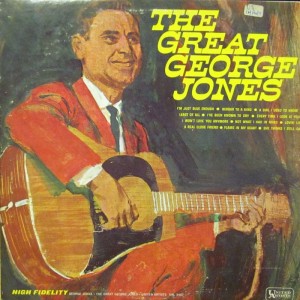 George Glenn Jones (September 12, 1931 – April 26, 2013) was an American country music singer known for his long list of hit records, his distinctive voice and phrasing, and his marriage to Tammy Wynette.
George Glenn Jones (September 12, 1931 – April 26, 2013) was an American country music singer known for his long list of hit records, his distinctive voice and phrasing, and his marriage to Tammy Wynette.
Over the past 20 years, Jones has frequently been referred to as the greatest living country singer.
Throughout his long career, Jones made headlines often as much for tales of his drinking, stormy relationships with women, and violent rages as for his prolific career of making records and touring. His wild lifestyle led to Jones missing many performances, earning him the nickname “No Show Jones.”
The shape of his nose and facial features have given Jones the nickname “The Possum.”
George Jones has been a member of the Grand Ole Opry since 1956. Jones has received many honors during his long career, from Most Promising New Country Vocalist in 1956, being inducted into the Country Music Hall of Fame in 1992, and being named a Kennedy Center Honoree in 2008. In 2012 he was presented with a Grammy Lifetime Achievement award. At the ceremony his longtime friend Merle Haggard paid tribute to him.
George Jones died April 26, 2013 at Vanderbilt University Medical Center in Nashville, Tennessee. He was hospitalized April 18 with fever and irregular blood pressure.
A True Country Music Legend – “George Jones”
Read more at: http://en.wikipedia.org/wiki/George_Jones
Check out this month’s issue of Classic Drummer Magazine!
It is Volume 12, Issue 1. It has Doane Perry, drummer for Jethro Tull on the cover. Clifford Hughes’s article is located at the very back pages of the magazine.
Like Drums? Want to order a copy of Classic Drummer this month?
Go check them out at:
www.ClassicDrummer.com
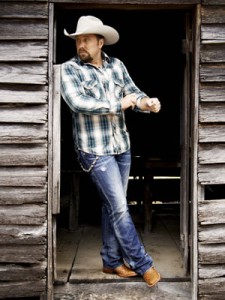 Newly Painted Belton, Mo. Landmark Reads “Home of Tate Stevens, Live the Dream!”
Newly Painted Belton, Mo. Landmark Reads “Home of Tate Stevens, Live the Dream!”
BELTON, Mo. (April 15, 2013) – Syco/RCA Nashville recording artist Tate Stevens is experiencing a lot of firsts this year following his first place finish on FOX’s The X Factor, including landing a record deal, releasing new single “Power of a Love Song” to country radio, and his upcoming April 23 self-titled debut album release. Now Stevens can claim a new “first” as his hometown honors him with an impressive 160′ City of Belton water tower, freshly painted with “Home of Tate Stevens, Live the Dream!”
Stevens, a former blue collar road worker for the city, always displayed such appreciation for his small hometown while pursuing his life-long dream of becoming a country music star on The X Factor. Viewers were captivated by this unassuming Southern gentleman with the powerhouse vocals. Among those viewers was a contingent of Belton residents, who led the charge to raise 100% the funds for the water tower repainting and dedication.
“It’s moments like this that really make me smile,” shares Stevens. “The support I’ve felt from the community is incredible, and I hope I can continue to make them proud. I’m so incredibly humbled by this honor.”
Belton officials unveiled the landmark, located near Stevens’ home off Interstate 49 and M-58 Highway on Sunday, March 31 with the formal dedication, which Stevens will attend, scheduled for Monday, April 22, with media call-time at 10:30a.m. CDT. Stevens will perform a sold out show in Kansas City, Mo. at the Midland by AMC on Sunday, but fans can still purchase a limited number of tickets to his Monday night performance here. 
For a list of upcoming tour dates and latest happenings on Tate Stevens, visit www.tatestevensofficial.com.
104 years old.
George Beverly Shea was a Canadian-born American gospel singer and hymn composer. Shea was often described as “America’s beloved Gospel singer” and was considered “the first international singing ‘star’ of the gospel world,” as a consequence of his solos at Billy Graham Crusades and his exposure on radio, records, and television.
Shea himself has said that he became a Christian at the age of five or six, but made a re-dedication to Christ when he was 18:
There were times when I needed to rededicate my life to the Lord Jesus. When I was 18, my dad was pastoring a church in Ottawa, and I was feeling not too spiritual. The church was having a “special effort,” as they called it, for a week. I remember that on Friday night Dad came down from the pulpit and tenderly placed his hand on my shoulder. He whispered, “I think tonight might be the night, son, when you come back to the Lord.” Whatever Dad did or said, I listened to him and respected him. And, yes, that was the night!
Shea accepted Christ again as his Saviour at the Sunnyside Wesleyan Methodist Church in Ottawa, Canada.
During his career, Shea was nominated for ten Grammy Awards, winning on March 15, 1966, the 1965 Best Gospel or Other Religious Recording (Musical) for his album “Southland Favorites” (RCA LSP-3440) recorded with the Anita Kerr Quartet.
On February 12, 2011, Shea received the 2010 Lifetime Achievement Grammy Award.
Read more at: http://en.wikipedia.org/wiki/George_Beverly_Shea
Bucky Covington took the same path to country music that was taken by Carrie Underwood, Kellie Pickler , Scotty McCreery and Casey James. Bucky, like the others, started on the stage of American Idol. He finished in eighth place during season five.
The path he took, however, has not been a smooth one. Since Bucky released his first album back in 2007, he hit a few stumbling blocks. His single, “A Different World,” from the album of the same name, made it into the top 10 on the country charts. That album also gave us the singles “It’s Good to Be Us,” and “I’ll Walk.”
Things started out good for Bucky. He was recording for Lyric Street Records, and his debut album was produced by Mark Miller, lead singer for the band Sawyer Brown. But, before Bucky had a chance to get his second studio album on store shelves, Lyric Street Records closed their doors, leaving him without a label for several years.
Now on the roster of Entertainment One Music Group, he is recording for eOne Records, and released his sophomore album, “Good Guys,” this past September. His first single from the new CD, “I Wanna Be That Feeling,” didn’t do as well as the singer would have hoped, making it only to the number 57 spot on country music charts. There are a lot of really good songs on the new album, and hopefully, Bucky and his management team will find one that works for country radio.
The 12 songs on the “Good Guys” album are I Wanna Be That Feeling, I’m Alright, Hold a Woman, Drinkin’ Side of Country (a duet with Shooter Jennings), Only Got So Much Time, Mama Must Be Prayin’, Sail On, I Always Said You’d Be Back, Mexicoma, I Want My Life Back, Gotta Be Somebody, and A Father’s Love (The Only Way He Knew How).
The music on this album is a nice mix of 70s country music coupled with a contemporary radio-ready feel. This project for Bucky definitely puts the old with the new.
“I’m Alright” is slow, and it’s good – it tells a story. Bucky’s vocals seem to be just the right sound for this song. That one is followed by “Hold a Woman.” I’m not sure where that ‘raspy’ voice came from – this, too, is a great song for Bucky.
He pairs up with Shooter Jennings, son of legendary country Waylon Jennings, on the song “Drinkin’ Side of Country”. Kellie Pickler has a part in the music video for this song, which Bucky co-wrote with his brother/drummer, Rocky. “Drinkin’ Side of Country” sounds like so many of the songs we are hearing on country radio these days, so I’m really not sure why it didn’t the air time I feel it deserved.
“Only Got So Much Time” is pretty much the story of everyone’s life. It puts you in mind of songs like “You’re Gonna Miss This,” or “Don’t Miss your Life,” and even Tim McGraw’s “Live Like You Were Dying.” While the words and thoughts are definitely different from those other songs, the message is simple….life is short, we only have so much time, use it wisely.
“Mamma Must Be Praying, the sixth song on the album, is a fast song with a familiar melody. When I first heard it, I knew it reminded me of something else, but I have no idea what. It’s not one of my favorite songs on this CD, but I don’t dislike it either.
For people who like a sad and depressing song every now and then, Bucky has one of those for you with “Sail On.” It’s a typical country break-up song, but it’s a pretty song. He follows that one with “I Always Said You’d Be Back,” which will get you back in a happy mood. What Bucky did her was follow the break-up song with a ‘you’re back’ song. This one is fun to listen to.
“Mexicoma” starts with the feel of a mariachi band, a little brass, a little fun… a little bit of ‘this makes me want to jump on a plane and take a vacation.’ It’s a good song, it’s everything you might expect from a ‘let’s go to Mexico, sit on the beach, and drink Tequila’ song. That brings us to “I Want My Life Back.” and we’re back to slow, a little bit depressing, a little sad… but one of my absolute favorites on this album.
The 11th song is called “Gotta Be Somebody,” and you might remember hearing this song before. It was the first official single released by Nickelback from their sixth album, Dark Horse, back in 2008. All I have to say about this is I believe Bucky’s version of the song is much better. It ended up being one of my favorites on the CD.
You can keep up with Bucky, and listen to some of his music, by visiting his web site http://buckycovington.com/. And, you can keep up with everything country by visiting ours at www.countryschatter.com. Follow us on Twitter, too, @countryschatter.
MusicChartsMagazine.com (USA) – The Pulse of Music – Music News around the World!
– Coming soon: Music Charts Magazine Canada & Music Charts Magazine Europe
Artist Name = Jessica Molaskey and Dave Frishberg
Genre = Jazz
Title = At The Algonquin
Record Company = Arbors
Though singer Jessica Molaskey receives top billing on this CD, her presence is unnecessary except on “Who’s on First?,” which requires two singers, and “Excuse Me for Living,” which must be sung by a woman. Dave Frishberg generously included her at this engagement, as he featured Rebecca Kilgore at other sessions. The CD belongs to him: he either wrote or collaborated on all the songs, sings on most of them, and plays piano on all of them.
One knows what to expect from Frishberg’s most appealing work: witty narratives with hip lyrics and engaging rhymes sung with a nasal voice to the composer’s own accompaniment. The narratives are the star. “I’m Hip” gives hilarious examples of the singer’s hipness, such as watching arty French movies while wearing sunglasses. At the conclusion of this selection, Molaskey says appropriately of Frishberg, “If you’re not hip, I don’t know who is.” On “My Attorney Bernie,” possibly his most famous song, the lyrics characterize an attorney who, among other things, always orders expensive wine, finds it unacceptable, and returns it. “I Want to Be a Sideman” enumerates the joys of being a sideman, among which are sleeping on buses, smoking during intermissions, and drinking in hotel bars. “My New Celebrity Is You” (lyrics additional to those written by Johnny Mercer) is notable for rhyming names, such as Michael Feinstein, Aaron Weinstein, Gertrude Stein, Albert Einstein. “Can’t Take You Nowhere,” which uses the melody of Tiny Kahn’s “TNT” plus a chorus from “Tiny’s Blues,” relates the embarrassing behavior of a date
or spouse: she drinks to excess, is cheap, overstays her welcome, and so forth. Yet the concluding words are ambiguous. In expressing sadness that the gauche one must leave, does the male imply deep love, or is he ironic?
I find Frishberg’s sentimental lyrics far less effective than the witty ones. They include “Do You Miss New York?,” a paean to the Apple, and “Listen Here,” a self-help lyric Frishberg wrote for Mary Tyler Moore. These ballads aspire to deep meaning but do not attain it.
During the 1930s, the Round Table—Robert Benchley, George S. Kaufman, Alexander Woollcott, and others—met frequently in New York at the Algonquin Hotel, where this CD was recorded in 2011. Another member was Dorothy Parker, about whom Frishberg wrote two of the songs heard here. The first, “Will You Die?,” questions, in a black humor manner, whether Parker will succeed at killing herself after three unsuccessful attempts. The disjunction between the meaning and the melody, which is jaunty, reinforces the humor. I wonder, though, about the advisability of performing such a song before an unsuspecting audience: a listener who knew a suicide would find nothing humorous about it. In the second Parker song, “Excuse Me for Living,” Molaskey sings of Parker’s sense of worthlessness. The lovely melody is as incongruous as the one to “Will You Die?”
Applause and laughter indicate that Frishberg and Molaskey delighted the Algonquin audience, though never more than on “My New Celebrity Is You.” The crowd erupts when Molaskey identifies Pizzarelli as a celebrity friend. She is married to the guitarist and singer John Pizzarelli who, with numerous friends, surely was responsible for the huzzah. One need not understand all the allusions on this or the other songs, though, to enjoy At the Algonquin.
Author = Benjamin Franklin V
Vernon Dalhart ( Marion Try Slaughter ) lived April 6, 1883 to September 14, 1948.
Vernon Dalhart was a popular American singer and songwriter of the early decades of the 20th century. He is a major influence in the field of country music.
Dalhart was born in Jefferson, Texas. He took his stage name from two towns, Vernon and Dalhart in Texas, between which he punched cattle in the 1890s.
From 1916 until 1923, using numerous pseudonyms, he made over 400 recordings of light classical music and early dance band vocals for various record labels.
Research by Billboard statistician Joel Whitburn determined “The Prisoner’s Song” to have been a No. 1 hit for 12 weeks in 1925-26. In 1998, “The Prisoner’s Song” was honored with a Grammy Hall of Fame Award and the Recording Industry Association of America named it one of the Songs of the Century. It was the
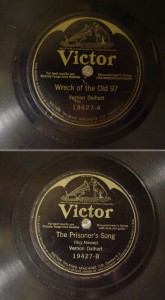 desire of the Victor Talking Machine Company to duplicate the sales success of ‘Wreck/Prisoner’ that led them to contract with Ralph S. Peer to go to the southern mountains in the Summer of 1927 to facilitate ‘The Bristol Sessions’, arguably the single-most important recording event in the history of country music, where Jimmie Rodgers and the original Carter Family were first discovered, and after which, Peer’s royalty model would become the standard of the entire recorded music industry.
desire of the Victor Talking Machine Company to duplicate the sales success of ‘Wreck/Prisoner’ that led them to contract with Ralph S. Peer to go to the southern mountains in the Summer of 1927 to facilitate ‘The Bristol Sessions’, arguably the single-most important recording event in the history of country music, where Jimmie Rodgers and the original Carter Family were first discovered, and after which, Peer’s royalty model would become the standard of the entire recorded music industry.
Read more: http://en.wikipedia.org/wiki/Vernon_Dalhart


